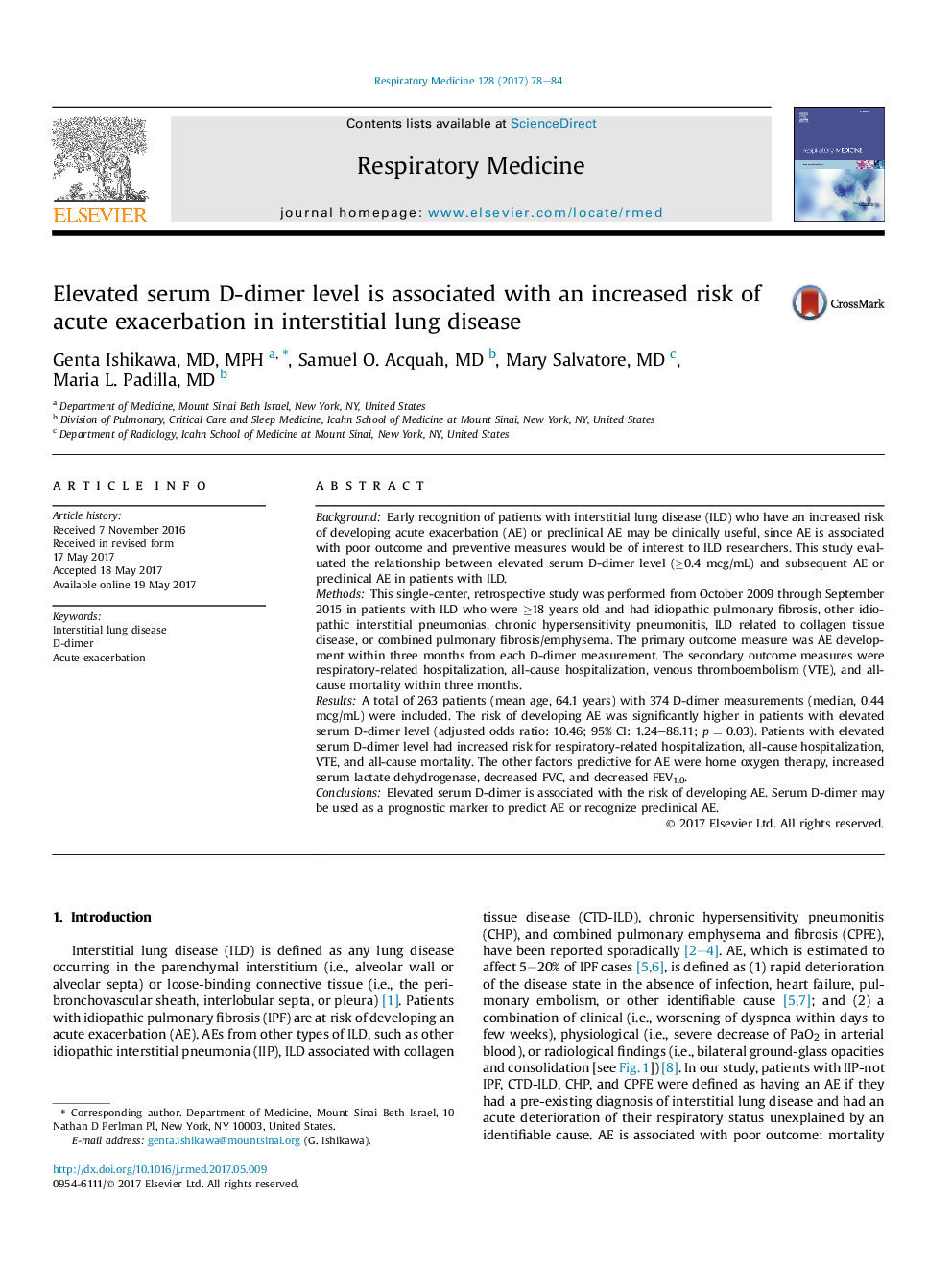| کد مقاله | کد نشریه | سال انتشار | مقاله انگلیسی | نسخه تمام متن |
|---|---|---|---|---|
| 5724973 | 1609438 | 2017 | 7 صفحه PDF | دانلود رایگان |

- Elevated serum D-dimer is associated with the risk of developing acute exacerbation (AE) of interstitial lung disease.
- Patients with elevated serum D-dimer have increased risks of hospitalization, venous thromboembolism, and mortality.
- The other factors predictive of AE are home oxygen therapy, increased serum LDH, decreased FVC, and decreased FEV1.0.
BackgroundEarly recognition of patients with interstitial lung disease (ILD) who have an increased risk of developing acute exacerbation (AE) or preclinical AE may be clinically useful, since AE is associated with poor outcome and preventive measures would be of interest to ILD researchers. This study evaluated the relationship between elevated serum D-dimer level (â¥0.4 mcg/mL) and subsequent AE or preclinical AE in patients with ILD.MethodsThis single-center, retrospective study was performed from October 2009 through September 2015 in patients with ILD who were â¥18 years old and had idiopathic pulmonary fibrosis, other idiopathic interstitial pneumonias, chronic hypersensitivity pneumonitis, ILD related to collagen tissue disease, or combined pulmonary fibrosis/emphysema. The primary outcome measure was AE development within three months from each D-dimer measurement. The secondary outcome measures were respiratory-related hospitalization, all-cause hospitalization, venous thromboembolism (VTE), and all-cause mortality within three months.ResultsA total of 263 patients (mean age, 64.1 years) with 374 D-dimer measurements (median, 0.44 mcg/mL) were included. The risk of developing AE was significantly higher in patients with elevated serum D-dimer level (adjusted odds ratio: 10.46; 95% CI: 1.24-88.11; p = 0.03). Patients with elevated serum D-dimer level had increased risk for respiratory-related hospitalization, all-cause hospitalization, VTE, and all-cause mortality. The other factors predictive for AE were home oxygen therapy, increased serum lactate dehydrogenase, decreased FVC, and decreased FEV1.0.ConclusionsElevated serum D-dimer is associated with the risk of developing AE. Serum D-dimer may be used as a prognostic marker to predict AE or recognize preclinical AE.
Journal: Respiratory Medicine - Volume 128, July 2017, Pages 78-84